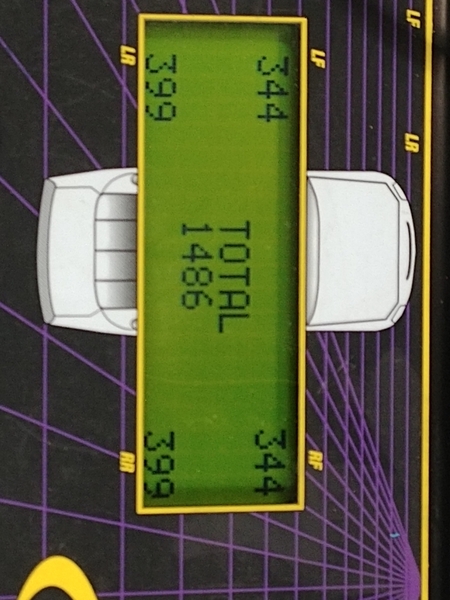MichalM, You didn't say the reason why you wanted to lower the spyder, but I suppose you do know that changing the existing rear ride height from 'as delivered' from your builder will change your rear wheel alignment and there is no adjustment to return it to the 'as delivered' geometry.
On a swing axle (like you have), lowering the rear via adjustable coil over springs (or torsion bars) will change the rear wheel camber; a 1" change in ride height will make a significant change. To a lesser degree, toe-in will also change.
I'd be surprised if your spyder was delivered with a misadjusted ride height, why do you want to change it?
Setting chassis balance and setting ride height are different subjects with different reasons to pursue. Balancing, as described by Danny, requires scales. It is fun to do, although you'll probably find you are close enough now to not actually mess with it. You do need scales under each tire. The perfect outcome would be to end up with all 4 tires loaded with the same weight. But that will not happen for you. As shown in the picture from Danny, the front end of a spyder is lighter than the rear end. (Technically speaking, the center of gravity is rear biased, but no need to be technical with physics and metrology). In your situation the best you can do is get the two front tires as close to each other as possible and the two rear tires as close to each other as possible (as shown in Danny's picture).
Focus on getting the two rear corners to weigh the same. If one rear corner is heavier than the other, decide which one you want to adjust. If you want to adjust the heavier corner, screw the coil spring adjustment UP, which will unload pressure on the scale under that corner. That will do 3 things: Lower rear ride height, transfer more weight to the other rear tire, and remove weight from the diagonal front tire + increase weight on the other front tire.
My suggestion would be to choose one rear corner to adjust and never touch the other corner. If you don't get as much change as you wanted from the adjustment, make more adjustment on the same corner. If you got too much, take it out of the same corner.
This method will allow you to get both rear corners to weigh the same to as-exact as you want to get (limited to within the scale's accuracy). But getting the front corners to weigh the same as each other is a different issue; you have no adjustment for front corner balancing. So after the rear is balanced, what you see in the front is what you get. The only thing you can do in the front is remove weight from the heavy corner and/or add weight to the light corner (like a fire extinguisher as Danny mentioned).
Now that you have done all of this, it all goes out the window when you plop your 200 pound self on the left-hand side! Short of reconfiguring to a single seat center drive cockpit, there's not much you can do. So if it were me, I'd drive the wheels off what was delivered and trust your builder has provided a well sorted chassis optimized for spirited on-road enjoyment. If you want to do track time or autocross or other competition, then . . . . .









